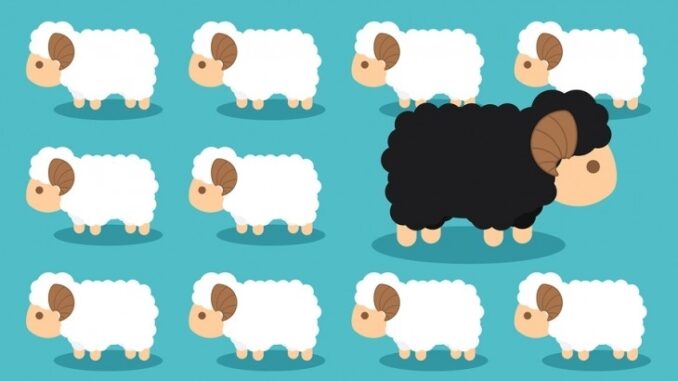
I emerged f rom2009 as a broken graduate, like many of my peers. We came into one of the worst job markets in all of U.S. history. Many of my friends worked retail or in a restaurant just to pay the bills. A couple of lucky ones actually made money pursuing their passions and the rest of us ended up like me, in jobs we didn’t necessarily want, but could cope with, and which would help pay our student loans. Before I got my corporate job, I worked a ton of different gigs–from selling psychic expo space, to a stint as the general manager of a salad store. I did whatever it took to pay down the looming debt from my university.
So as a young, fresh-faced 23-year-old, getting an opportunity to work at one of the largest IT corporations seemed like a dream. My father had worked as a maintenance man for most of his life, and I grew up watching him clean up after people who worked in offices. This twisted my perception and the importance I placed on social hierarchy and “cultural fit.” When I was told I could sit in front of a desk, have people clean up after me and make money, I more than obliged the opportunity.
According to Lauren Rivera, associate professor at Northwestern University’s Kellogg School of Management, “cultural fit is the idea that the best employees are like-minded.”¹ This has affected the way hiring managers make their decisions, and often dictates the longevity of a person in his or her position. And while it is a top priority for 80% of companies,² it was not something that I envisioned as a threat to my job.
When I first started working in Corporate America, I accepted offers to come to the company happy hours and social events. I would go to the bar and listen to colleagues talk about about their kids, mortgages, and cul-de-sac neighborhoods. I’d drink terrible beer and have a grin on my face while secretly being bored out of my mind. Socially, I did not fit in at work. Most of my co-workers were at least twenty years older than me and we didn’t have anything in common.
As time elapsed I became tired of pretending to like everyone I worked with. I wasn’t a mean person, but declined any offers to do things socially with my coworkers. I concentrated on my job and life outside of work. What I began to see was a definite divide among my colleagues. My boss began to promote those she was friends with and hired temps who threatened my job and seemed like carbon copies of her. Over time my accomplishments became increasingly marginalized as the company declined into debt. People started getting laid off. Some of my colleagues who didn’t deserve to be let go were forced to leave the company.
Over the duration of my employment I had replaced my own job two times by automating it with the programming team. I had saved the company somewhere around $50,000, not to mention the benefit my company earned in the form of my daily duties. However, when the time came to “re-evaluate” my department, many of those accomplishments became instantly forgotten and my work was criticized by a VP whom I had never met. Those that were incompetent around me thrived in higher positions, while I, after two years, had only received a single raise.
The last thing my boss said to me before laying me off and having the security guard escort me downstairs was “you didn’t really like this anyway.”
Being a corporate cultural fit – or what I call New Age Nepotism – is something that not only hinders the ability for companies to hire a diverse range of talent who can question and challenge one another, but it also promotes inadequacy at the workplace “as long as you fit in.” If you don’t look, talk, or act like your co-workers, people begin to criticize you. You no longer become the best candidate for a raise or never get your foot in the door because you don’t seem like you’d be a good friend. For a variety of reasons, employers should look for talent that can work as a team productively and objectively, and that doesn’t necessarily mean they all enjoy the same type of music or frequent the same bars. If corporations don’t care about unintended discrimination in the hiring process they should at least care about their profits, and how a diverse workforce creates a more interesting work environment as well as more opportunity for growth.
Resources:
¹ Rivera, Lauren. “Guess Who Doesn’t Fit In at Work.” The New York Times. The New York Times, 30 May 2015. Web. 4 June 2015.
² “Cubiks International Survey on Job and Cultural Fit.” Cubiks.com. 1 July 2013. Web. 4 June 2015.
